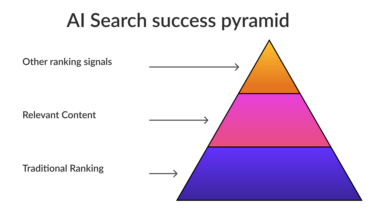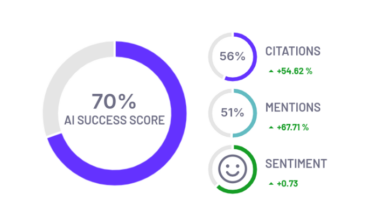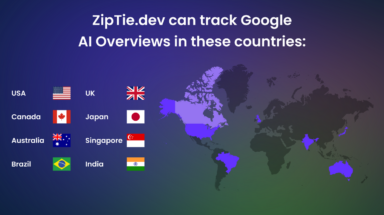Soft 404 errors might not be as well known as other indexing statuses, such as “Crawled – but Currently Not Indexed” or “Discovered – Currently Not Indexed”, but they can significantly harm your website’s visibility on Google.
In this article I will show you how to fix them.
The Impact of Soft 404 Errors
If a page is flagged as a soft 404, it means it isn’t indexed in Google.
The problem is that quite often even high-quality pages are mistakenly identified by Google as soft 404s.
In this article, I show you how to identify such problems.
Here are the three most common reasons for Soft 404:
- Low-Quality Content: This should be obvious, Google doesn’t want to index content that doesn’t meet the quality standards.
- Technical Problems with Your Website: Surprisingly, even high-quality, relevant content can be mistaken as a soft 404 due to technical issues, such as problems with JavaScript SEO.
- Google’s Misinterpretation: Sometimes, Google can deindex thousands of pages because of some weird issues I discuss later in the article.
Case Study 1: An E-commerce Website’s Deindexing – (50% drop)
For example, one of our e-commerce clients implemented a layout change. They thought it was just a small change and didn’t need to be reviewed by the SEO team. That’s when most SEO horror stories start 🙂
As a result, Google deindexed 800k URLs, totaling almost half of the website. The website lost around 40% of its traffic.
We started our SEO analysis and found a short sentence in the code that wasn’t included in the old layout.
There was a tiny, innocent, boilerplate phrase (“no product available”) in their code. The phrase wasn’t even visible on the screen, yet was included in EVERY product page.
Easy fix
Getting rid of this boilerplate sentence helped our client get back on track (see the chart around August 2022). It took a while for Google to fully process the changes, but eventually, we got rid of these issues after Google’s March Update.
Case 2:
Another client case – they noticed that Google can’t index any blogpost pages. Google Search Console was reporting soft 404. The client thought it is a Google bug, and checked the pages in ZipTie.dev.
ZipTie noticed that all these pages are soft 404, confirming Google Search Console’s findings.
The client was totally surprised that both ZipTie and GSC showed the Soft 404 errors.
Then I checked the source code, and there was a part of JavaScript code that contained the text: “Page not found”.
Once the client deleted this fragment of code, Google started indexing the website properly.
These two cases show that even high-quality pages can have problems with indexing due to a very tiny thing.
Google’s Explanation
Google’s Martin Splitt shed light on this issue, noting that sometimes Google’s error page handling system can misinterpret a valuable page based on the keywords used, classifying it as a Soft 404 error page.
“This can also lead to very funny bugs, I would say, where, for example, you are writing an article about error pages in general, and you can’t, for your life, get it indexed. And that’s sometimes because our error page handling systems misdetect your article, based on the keywords that you use, as a soft error page.”
And that’s the reason on why two clients of ZipTie.dev had soft 404 issues even if their website quality was high. Fortunately enough, in both cases, ZipTie spotted the issue so the websites could fix their indexing issues.
If they didn’t use ZipTie, they would probably still have this very issue and continue losing their traffic.
The Role of JavaScript in Soft 404 Errors
JavaScript can sometimes cause issues with Google’s ability to see your content and eventually may cause your pages to be treated as a soft 404.
Despite 80% of popular websites using JavaScript to generate essential content, Google still struggles with rendering JavaScript content in 2023.
Google’s ability to render JavaScript content isn’t an exact science. However, based on observations, small, popular websites should generally be fine. Larger websites, especially those with numerous JavaScript files per page, may encounter crawling and indexing issues.
On top of that, Gary Illyes of Google highlighted in December 2022, that Google still struggles with rendering content on JavaScript-heavy websites. What’s more, Google’s recently updated documents on Dynamic Rendering also suggest avoiding client-side JavaScript rendering.
How ZipTie can help in diagnosing JavaScript SEO issues
ZipTie can help you diagnose JavaScript SEO issues.
First, it will show you average content JS dependency.
Then, it will show you pages with the highest dependency.
What you can do is to check a sample of pages with the highest JavaScript dependency in Google Search Console. Analyze if Google classifies them as soft 404. If so, it’s very likely that it’s caused by JavaScript.
If you suspect that JavaScript causes your soft 404 problems, you can analyze how Google renders your content, by using the URL Inspection tool.
I wrote an article showing you step-by-step how to detect JavaScript SEO issues.
Soft 404s can be fixed
Soft 404 problems are definitely fixable. Here are just three examples from some of our clients:
Client 1:
Client 2:
Client 3:
Here’s the basic logic for fixing Soft 404 errors
Step 1: Check the quality of the affected pages
First you need to click on Indexing -> Pages.
You’ll see the number of affected pages. In my case, it’s 1107.
Then, to view a sample of affected pages, you need to click on “Soft 404”.
Choose a sample of important pages identified as soft 404s and try to objectively judge their quality.
Consider improving page quality
If the pages are low quality, consider improving them. However, if you’re certain that a page is of high quality and it’s still classified as “Soft 404”, you need to:
- Review if there are JavaScript SEO issues. You can find more in my article about Diagnosing JavaScript SEO issues.
- Review if there are phrases that might make Google think the product/content is not available, such as “Page not found,” “Product not found,” “Out of stock,” etc.
If your website struggles with indexing, we strongly recommend using ZipTie.dev.
We also offer consulting services to help you detect and solve indexing issues to restore your traffic back to normal. Questions? Comments? We’d love to hear from you. Feel free to reach out to us!






